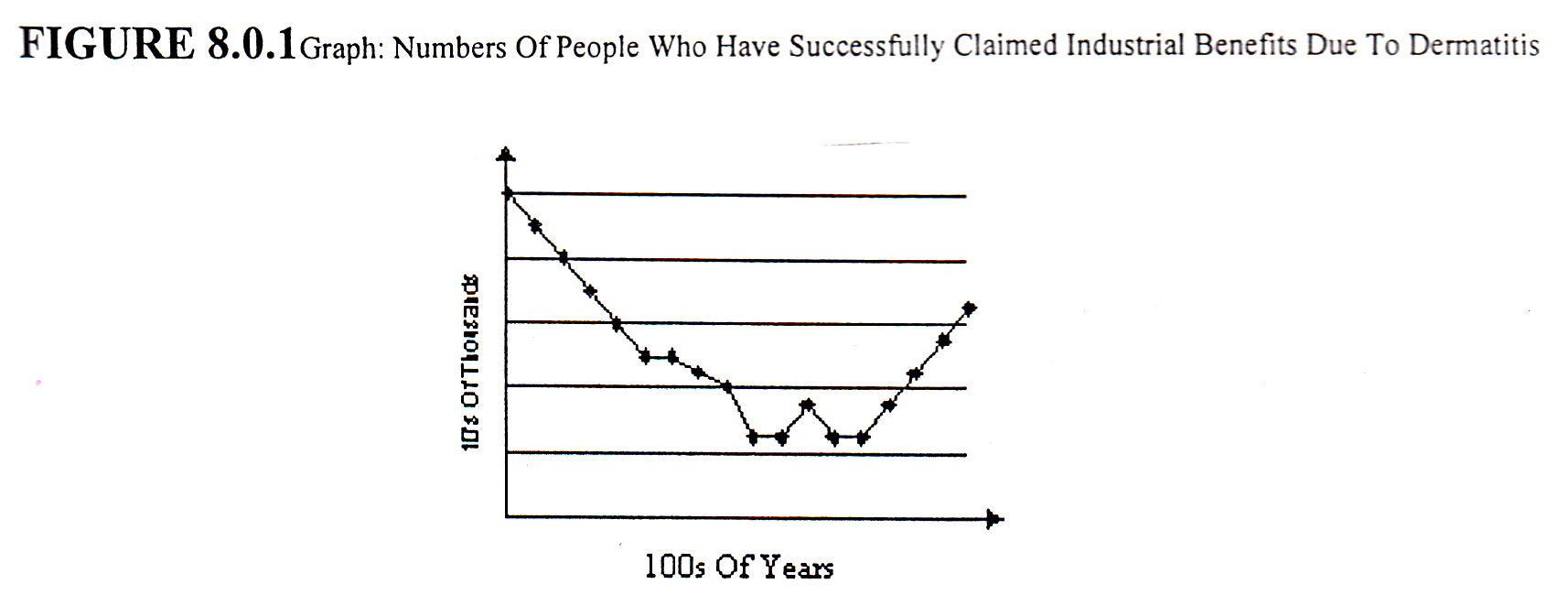From Plant Contact Dermatitis [17]
The Cost To The British Industry
This is a graph (FIG.8.0.1) from the DSS, illustrating the numbers of people who have been successfully awarded compensation, from meeting the criteria for entitlement to benefit, which is very complex. The numbers are increasing gain due to an increase in industrial dermatitis.
FIGURE 8.0.1 Graph: Numbers Of People Who Have Successfully
Claimed Industrial Benefits Due To Dermatitis

On the whole 4 million days are lost to cases of dermatitis each year, costing £300,000,000
a year. This is in Britain alone. Cases in the third world are extremely high, even in Spain the
incidence is widespread, because of the lack of civilised facilities. The actual figures in HSE notes are very conservative. They only report people who have actually suffered from severe dermatitis, and were successfully awarded compensation. Most cases are not reported because they are minor, or employees may fear loosing their jobs if they complain. Also even when reported to doctors, they seldom are able to treat it efficiently. Due to lack of medicines and time, and are not obliged to treat dermatitis from plants as an industrial disease as it is not a prescribed occupation (Chap 15.0 ) The workers tend to be part time and casual also, and the condition may disappear after leaving work . So the affliction is relatively unrecorded. It seems quite horrendous that such a common and debilitating disease goes unnoticed and unreported. Everyone is to blame.
8.1 Why The Numbers Of Cases Are Increasing
I believe the numbers of cases due to plant dermatitis are increasing due to the sharp climb in competitiveness of the horticulture industry in the last 10 years. In Britain plants are becoming very popular and a major export to Europe. The benefits of profit are very obvious, along with Britain's favourable climate and disposition in the world market. It is rapidly attracting new recruits. However this increase means longer hours, harder work, with a greater number of plants being contacted . Continuous handling of some varieties can be dangerous (Chap 6.3) Also obscure tropical plants are even more popular. e.g. Primula obconica regardless of its toxicity. The new recruits are often rushed through an education, which does not take a priority. Many do not get the chance to even attend a college, and enter the market immediately without any knowledge of these poisons.
Dermatitis In the Horticulture Industry By James M. Burton In Association With Pencoed College Copyright 1997